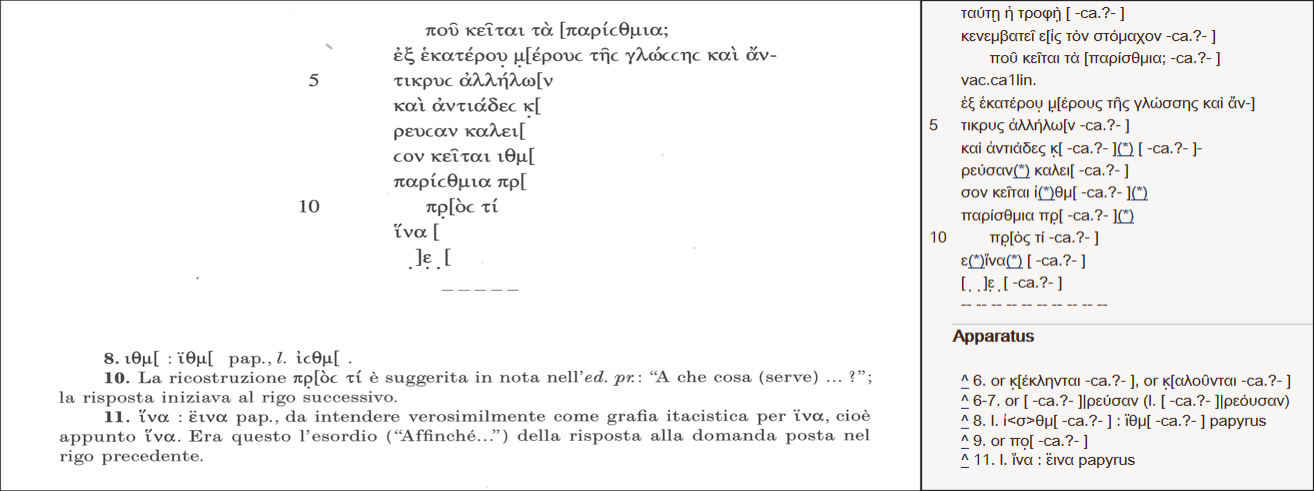Papyrology has always been facing an adventurous textual situation, coping with fragmentary texts and idiosyncratic utterances, being particularly interested in the scribal and material phenomenology of textual development, which affects consistency in treating the existing textual fluctuations. Traditionally, Papyrology is a philological discipline, focused on texts and their critical reconstruction, and this background has been inherited by the main papyrological database, the Duke Databank of Documentary Papyri now featured by the Papyri.info platform. The core text is encoded in an XML subset of EpiDoc, transcoded via a corpus-specific markup language called Leiden+, [3] but the human-readable HTML output closely resembles that of a traditional paper critical edition, as in the following specimen (PSI XV 1510, medical catechism on anatomy, III cent. AD—printed edition on the left, digital edition at http://litpap.info/dclp/64024 on the right):

Diachronic fluctuations (linguistic change)
Synchronic fluctuations (personal uses and regional substandards)
Textual fluctuations in copies and duplicates
Papyri preserving the ‘same’ text in multiple copies [17] are traditionally treated in the ‘philological’ way, i.e. collated and merged in one source archetype: e.g. http://papyri.info/ddbdp/p.tebt;3.1;771dupl (note the suffix ‘dupl’ added to the URL of the digital text, which advises about the existence of a duplicate of the papyrus). However, a certain degree of uneasiness is felt about such a practice:
A new ‘phenomenological’ consideration of papyrus copies is emerging, [19] but, for now, the digital database is following the ‘philological’ practice, with a significant loss of information. This relates above all to the scribal practice, the ancient consideration of the documents as material products rather than immaterial texts, and the cognitive process that underlies the “act of the scribe,” to exploit the title of the digital project at Helsinki which focuses on the role of the scribes and of their writing skills in the linguistic outcome of Greek papyri. [20] Any aspect related to the process of producing a written document is a key to understand that texts are not fixed entities but evolving devices.
